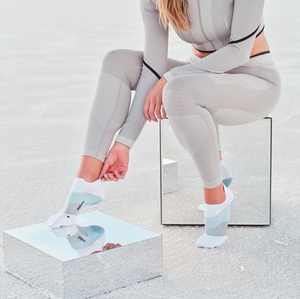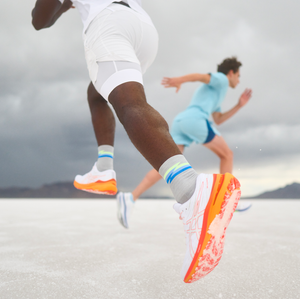As the amount of daylight slowly decreases many runners are increasing the distance of their long run in preparation for a successful fall marathon. The “long run” is one of, if not the single most important training run in a marathon training program. These runs serve numerous purposes including an assortment of physical adaptations in the cardiovascular, muscular, and metabolic systems along with the development of a runner’s mental fortitude and confidence. But are you getting the most out of these critical runs?
The Two Types of Long Runs - Long Easy Runs & Fast Paced Long Runs
To spice up these long runs while maximizing your training benefits there are two variations that should be incorporated into every training plan: the traditional long easy runs and faster paced long runs.
Fats and carbohydrates are used by our body for fuel during the marathon. Our body only stores a limited amount of carbohydrates but our fat stores are bountiful. However the conversion of fat to usable energy is a much slower process than if your body used carbohydrates. When running slower your body generally relies more on fats for energy thus preserving your limited stores of glycogen.
Long Easy Runs
This style of long running increase your ability to burn fat thus sparing your limited stores of glycogen and mentally prepare you for the extended time you will be on your feet. In the traditional long steady run, you don't run fast. These runs are typically run at 45-90 seconds slower than your goal marathon pace (GMP).
Faster Long Runs
A fast-paced long run includes segments just above, at, or just below GMP train your body to work more efficiently at marathon pace and mentally prepare you for the extreme fatigue that accompanies the faster pace.
So how do you incorporate these faster miles into your long run? One of the most common methods is by doing a “fast finish long run” where you finish the last fifth to half of the run at GMP. More experienced runners who have regularly incorporated these types of runs into their training plan throughout the current training cycle may run up to the last 12-14 miles of a long run at GMP. The experienced marathoner may also elect to run the last mile at 15-30 seconds faster than GMP. For example an 18 mile fast finish long run for someone who's GMP is 8:00 per mile might be run with the first 12 miles 9:00 per mile, then 5 miles at 8:00 per mile and the last mile at 7:30.
A more difficult version of this type of run would be the progression run. Here you incrementally increase your pace as the run progresses. For example a 20 mile fast progression run might be run as follows: 6 miles @ 60 seconds above GMP, 6 miles @ 30 seconds above MP, 6 miles @ Marathon Pace, and 2 miles @ below GMP.
Long Run with Marathon Intervals
Yet a third type of run would be a long run with marathon interval segments. In this run you run easy but intersperse segments at GMP. For example an 18 mile run might begin with 5 easy miles followed by 3 at GMP, 2 miles easy, 3 at GMP, 2 miles easy and 3 at GMP.
These faster long runs require extra recovery and should at most, be done every other week. Doing them too often will over-stress your body, impede your training and may even result in injury. It goes without saying; you can’t get to the finish line faster if you never make it to the starting line.
Our Favorite Socks for Marathons
Elite Light Cushion A long time favorite of marathoners everywhere. Cushion in all the right places, Targeted Compression and Anatomical Design for a custom-like fit, and a mesh top for excellent ventilation makes for a sock that is made for the long run.
Elite Mini Crew Show off your style every mile with this colorful crew style. Five inch cuff with just enough spandex to keep it in place for 26 miles.
Elite Ultra Light Quarter - This classic style gives retro vibes and the quarter length sits right at the ball of the ankle. Great for marathon course with dirt or gravel to help keep debris out of your shoe.
All of our socks are engineered to help keep you blister free and going for miles and miles. Backed by a lifetime guarantee, our socks are made to last whether you're running a 5k or training for a marathon.



Hii
Highly valuable explanation of training for all runners. Motivation helps, too !
Leave a comment